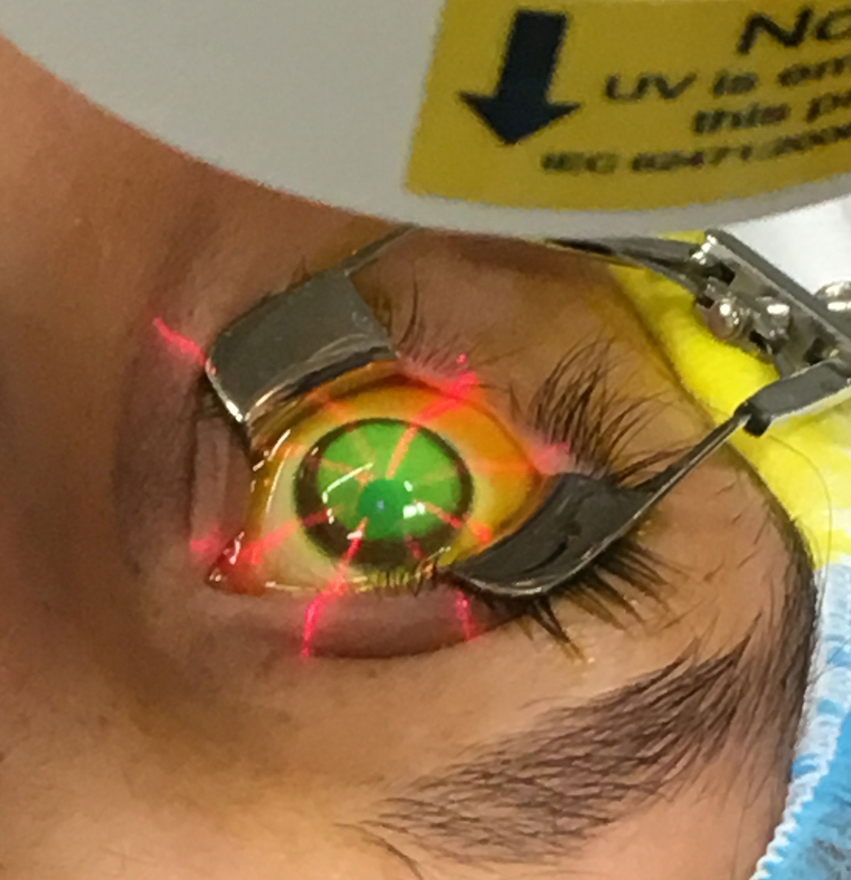 |
| This study found that in terms of several clinical outcomes, accelerated CXL was non-inferior to standard CXL. Photo: Glaukos. Click image to enlarge. |
A recent study, which aimed to better understand the long-term efficacy of accelerated corneal collagen crosslinking (CXL) among pediatric keratoconus patients, found that this treatment approach was associated with improved visual function, reduced corneal astigmatism and Kmax and decreased thinnest corneal thickness.
The researchers conducted a historical cohort analysis of 93 pediatric patients (≤18 years old) with keratoconus who underwent standard (n=54) and accelerated (n=39) CXL. The preoperative and three-year postoperative evaluations included changes in visual acuity (best-spectacle corrected and uncorrected), refractive error and keratometric data.
Both groups showed a significant improvement in visual acuity compared with baseline, according to the study authors, who reported that improvements in best-spectacle corrected and uncorrected visual acuity following accelerated CXL was non-inferior to standard CXL.
The data demonstrated that Kmax decreased by a mean of 0.98±5.56D and 1.48±8.4D following standard and accelerated CXL, respectively. The study authors also observed that thinnest pachymetry decreased after both treatments, and the difference between groups was within the non-inferiority margin.
“Among pediatric patients with keratoconus followed for three years, accelerated CXL was non-inferior to standard CXL in terms of best-corrected and uncorrected visual acuity, thinnest pachymetry and astigmatism,” the study authors concluded. “An accelerated protocol may be more beneficial in patient comfort and more suited to the pediatric population.”
Einan-Lifshitz A, Achiron A, Hed S, et al. Three-year follow-up of accelerated versus standard corneal cross-linking in pediatric Keratoconus. Eye (Lond). May 19, 2022 [Epub ahead of print]. |


